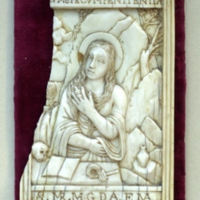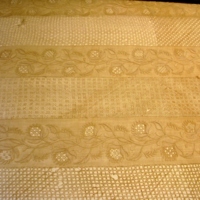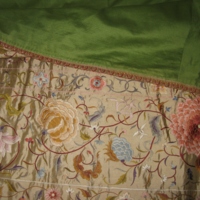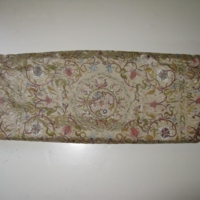Nativity firgure
Text
Figure of a magi king on horseback. He has the head, feet and hands of ivory. Eyes and his hair are polychrome. Joint form with PROV 02/03 and PROV 02/04. The inside is a wooden frame that is articulated by wires. He is dressed in the Spanish fashion of the XVII century. The image wears marlota (Robe, a kind of Moorish gown) with a cape, sleeveless jacket, shirt and narrow pants and short.
The horse is made of painted papier-mâché.
Analysis: The carved hair and painted eyes identify this figure as a Spanish-Philippine colonial ivory. remains of polychrome are preserved. Both this figure and the other white king that forms part of the set (PROV 02/04) have physiognomic features reminiscent of those of Spanish monarchs of this period (fly goatee, mustache and mane). They are decked out to the Spanish court fashion of the seventeenth century.
BIBLIOGRAPHY: PEREDA, R. and RODRÍGUEZ BERNIS, S. (com.), Don Quixote in his suits, Madrid, 2005, p. 170 [11142]. The production of ivory carvings with western patterns by Filipino artisans focuses from its first creations in the sixteenth century in the religious images of Christ crucified, the Virgin in different invocations and saints that served to reinforce the dogmas of the Church in those lands.
They were worked on both exempted one-piece models, reliefs and as elements for dressing images in which only the head, hands and feet are carved in ivory being the rest of the body made of wood and prepared to be covered with rich vestments as in this case.
Group compositions are not frequent although there are some known examples of the Holy Family and some Nativity scenes, both among those of Hispanic-Filipino origin as well as among the Indo-Portuguese (M. ESTELLA: Baroque sculpture of ivory in Spain, I, page 86.).
The three kings wear an ecru silk satin coat or overall with flowers. Damask with embroidered plant motifs in gilt silver lamellae stretch out. Although the cuts of these dresses are the same in all cases, silk used varies being identical in those of Melchior and Gaspar while that of King Baltasar differs with floral motifs in yellow. The metallic embroidery designs that adornthe sleeves and trims are different in the three copies.
Share this



